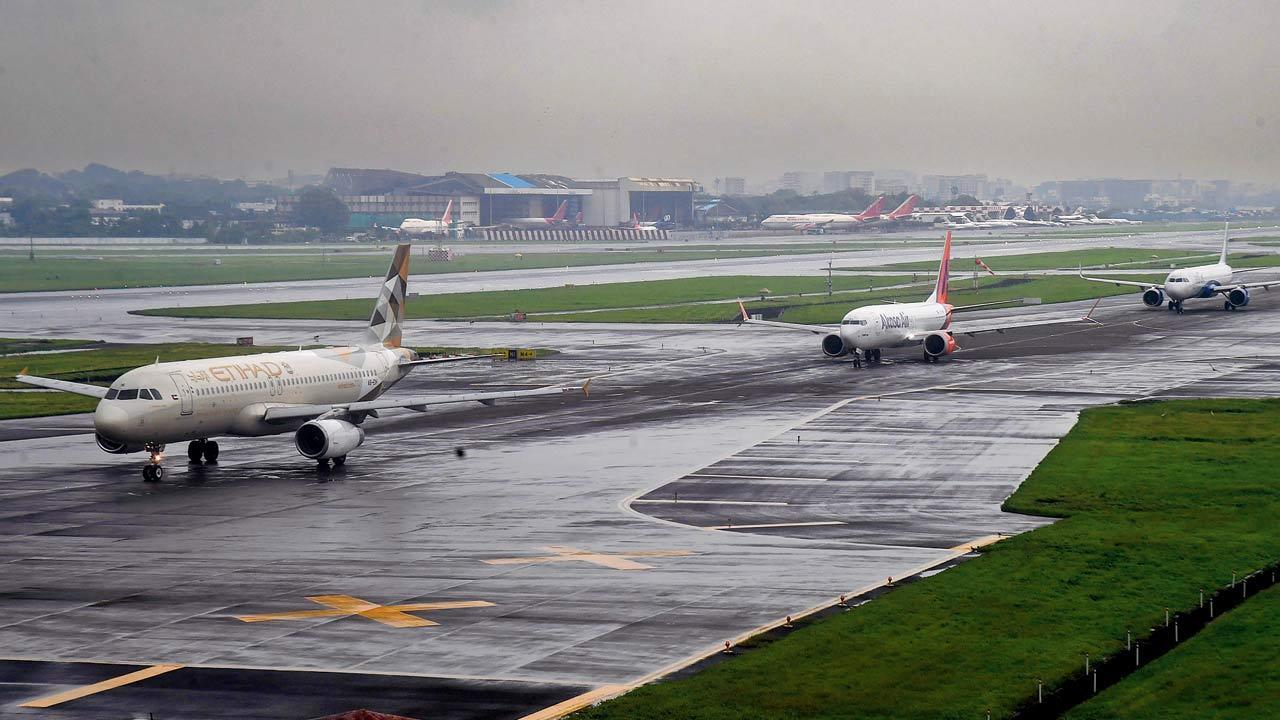Though Mumbai ATC did not disclose the exact number of flights delayed, ATC sources said delays were not too high as the runway was operational, unlike on Monday morning when operations had to be paused due to the weather

Planes sit on the wet tarmac at the airport on Monday. Pic/PTI
Flights to and from Mumbai faced disruptions on Friday morning. Various airlines issued statements saying that the delay was due to weather conditions and air traffic congestion at Mumbai airport. Meanwhile, senior pilots and experts suggest that delays could have been reduced by using various procedures.
ADVERTISEMENT
On Friday morning, heavy rain caused low visibility and gusty winds. Sources from Mumbai Air Traffic Control (ATC) told mid-day, “The weather was not as favourable. There were crosswinds [winds perpendicular to the runway and landing and departing aircraft]. Crosswinds were six knots, gusting to 17 knots.”
Airlines’ statements
Though Mumbai ATC did not disclose the exact number of flights delayed, ATC sources said delays were not too high as the runway was operational, unlike on Monday morning when operations had to be paused due to the weather.
Sources claimed Air India and IndiGo faced more disruptions compared to other airlines operating from Mumbai as they had more morning flights. Queries sent to IndiGo and Air India went unanswered till press time.
‘Inexperienced pilots’
Captain Mohan Ranganathan, a senior pilot told mid-day, “Newer-generation pilots are not comfortable landing in such weather conditions. Generally, in such conditions, we take the instrument landing system (ILS) approach where the autopilot lands the aircraft, which is a safer approach as the aircraft is guided by beams of radio frequencies to the runway. This reduces the possibility of human error in such weather conditions.”
A senior flight instructor said, “Newer pilots lack physical experience in flying and landing in such conditions but this gets developed over time. For some pilots, this may even be their first monsoon.”
He added, “Every approach depends on the pilots. If they feel comfortable about going ahead with an approach, they will go with it but if they feel uncomfortable, they will reject it. It is always better to be safe than sorry. No doubt, the delays could be reduced but considering these factors is also necessary.”
 Subscribe today by clicking the link and stay updated with the latest news!" Click here!
Subscribe today by clicking the link and stay updated with the latest news!" Click here!







